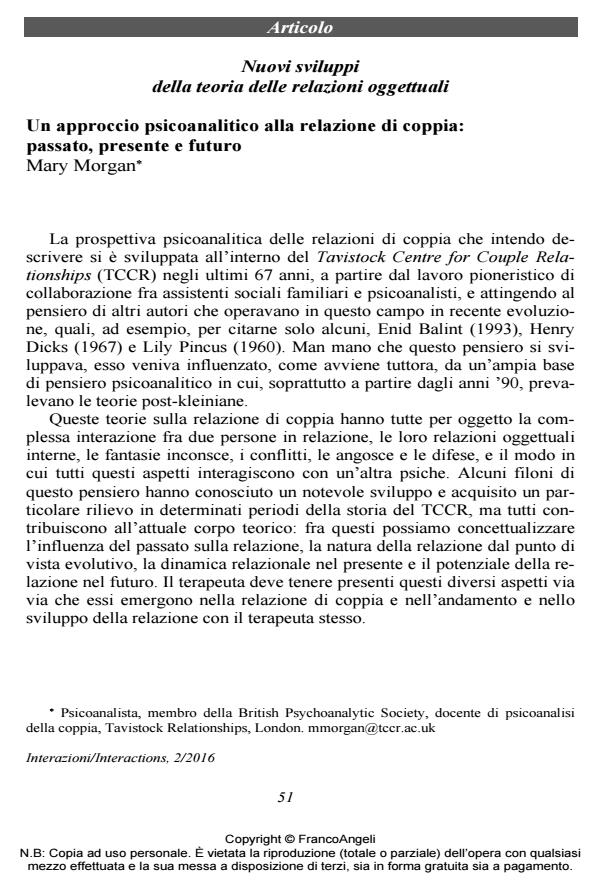A psychoanalytic approach to the couple relationship: past, present and future
Journal title INTERAZIONI
Author/s Mary Morgan
Publishing Year 2016 Issue 2016/2
Language Italian Pages 13 P. 51-63 File size 172 KB
DOI 10.3280/INT2016-002006
DOI is like a bar code for intellectual property: to have more infomation
click here
Below, you can see the article first page
If you want to buy this article in PDF format, you can do it, following the instructions to buy download credits

FrancoAngeli is member of Publishers International Linking Association, Inc (PILA), a not-for-profit association which run the CrossRef service enabling links to and from online scholarly content.
A psychoanalytic approach to understanding the couple relationship is given based on factors in the past, present and future. Aspects of each partners past influences the current relationship and can be responded to by the couple defensively or developmentally. The present is considered in developmental and dynamic terms, i.e. what kind of couple exists in terms of psychic development in the process of being "a couple", as well as how the couple manage the dynamic of there being an "other" in the relationship. The future is considered in terms of how the couple might carry on developing in the context of a relationship which could be creative for them both together and individually. A brief clinical example is given.
Keywords: Couple, unconscious choice of partner, unconscious contract, couple’s transference relationship, projective gridlock, alterity, the link (el vinculo), interference, creative couple.
- La transizione separativa Marina Mombelli, in INTERAZIONI 2/2020 pp.48
DOI: 10.3280/INT2020-002004
Mary Morgan, Un approccio psicoanalitico alla relazione di coppia: passato, presente e futuro in "INTERAZIONI" 2/2016, pp 51-63, DOI: 10.3280/INT2016-002006